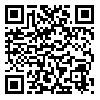Volume 22, Issue 4 (December 2024)
Iranian Rehabilitation Journal 2024, 22(4): 583-594 |
Back to browse issues page
Download citation:
BibTeX | RIS | EndNote | Medlars | ProCite | Reference Manager | RefWorks
Send citation to:



BibTeX | RIS | EndNote | Medlars | ProCite | Reference Manager | RefWorks
Send citation to:
Ali H M, Sulaiman S K, Bello U M, Muhammad A S, Ado F M, Maina H A, et al . Telerehabilitation in Promoting Home-based Upper Extremity Exercises Among Stroke Survivors: A Pilot Study. Iranian Rehabilitation Journal 2024; 22 (4) :583-594
URL: http://irj.uswr.ac.ir/article-1-2080-en.html
URL: http://irj.uswr.ac.ir/article-1-2080-en.html
Hafsat Maina Ali1 

 , Surajo Kamilu Sulaiman *2
, Surajo Kamilu Sulaiman *2 

 , Umar Muhammad Bello3
, Umar Muhammad Bello3 

 , Abdullahi Salisu Muhammad4
, Abdullahi Salisu Muhammad4 

 , Fatima Mahmud Ado5
, Fatima Mahmud Ado5 

 , Hassan Ali Maina6
, Hassan Ali Maina6 

 , Hussaina Abubakar Jalo7
, Hussaina Abubakar Jalo7 
 , Mohammed Usman Ali8
, Mohammed Usman Ali8 

 , Ismail Muhammad Bello9
, Ismail Muhammad Bello9 

 , Halima Maina10
, Halima Maina10 




 , Surajo Kamilu Sulaiman *2
, Surajo Kamilu Sulaiman *2 

 , Umar Muhammad Bello3
, Umar Muhammad Bello3 

 , Abdullahi Salisu Muhammad4
, Abdullahi Salisu Muhammad4 

 , Fatima Mahmud Ado5
, Fatima Mahmud Ado5 

 , Hassan Ali Maina6
, Hassan Ali Maina6 

 , Hussaina Abubakar Jalo7
, Hussaina Abubakar Jalo7 
 , Mohammed Usman Ali8
, Mohammed Usman Ali8 

 , Ismail Muhammad Bello9
, Ismail Muhammad Bello9 

 , Halima Maina10
, Halima Maina10 


1- Department of Physiotherapy, Bayero University, Kano, Nigeria.
2- Department of Physiotherapy, Faculty of Applied Science, Tishk International University, Erbil, Iraq.
3- Department of Paramedicine and Physiotherapy, Glasgow Caledonia University, Glasgow, United Kingdom.
4- Department of Physiotherapy, Yobe State University Teaching Hospital, Damaturu, Nigeria.
5- Department of Physiotherapy, Yobe State Specialist Hospital, Damaturu, Nigeria.
6- Department of Anesthesia, Modibbo Adama University Teaching Hospital, Madumari, Nigeria.
7- Department of Pediatrics, Yobe State Specialist Hospital, Damaturu, Nigeria.
8- Department of Medical Rehabilitation, University of Maiduguri, Maiduguri, Nigeria.
9- Department of Pediatrics, Khalifa Sheikh Isyaka Rabiu Paediatric Hospital, Kano, Nigeria.
10- Department of Nursing, Shehu Sule College of Nursing and Midwifery, Damaturu, Nigeria.
2- Department of Physiotherapy, Faculty of Applied Science, Tishk International University, Erbil, Iraq.
3- Department of Paramedicine and Physiotherapy, Glasgow Caledonia University, Glasgow, United Kingdom.
4- Department of Physiotherapy, Yobe State University Teaching Hospital, Damaturu, Nigeria.
5- Department of Physiotherapy, Yobe State Specialist Hospital, Damaturu, Nigeria.
6- Department of Anesthesia, Modibbo Adama University Teaching Hospital, Madumari, Nigeria.
7- Department of Pediatrics, Yobe State Specialist Hospital, Damaturu, Nigeria.
8- Department of Medical Rehabilitation, University of Maiduguri, Maiduguri, Nigeria.
9- Department of Pediatrics, Khalifa Sheikh Isyaka Rabiu Paediatric Hospital, Kano, Nigeria.
10- Department of Nursing, Shehu Sule College of Nursing and Midwifery, Damaturu, Nigeria.
Abstract: (3604 Views)
Objectives: Stroke is a major cause of disability in adults, necessitating consistent patient-therapist interactions and diligent adherence to home-based rehabilitation programs to achieve substantial functional recovery. This study assessed audio-based telerehabilitation's (TR) preliminary effect and feasibility in promoting home-based upper extremity exercises among stroke survivors.
Methods: A 4-week parallel two-arm pilot study design was employed. Fourteen stroke survivors (seven each in the experimental and control groups) were recruited. Individuals in the control group received standard care consisting of visits to physiotherapy outpatient clinics, while the intervention group received standard care in addition to audio-based TR. The independent t-test and chi-square test were used to analyze differences in the clinical and sociodemographic data. The independent t-test was used to measure the treatment effect on the upper limb motor function (Fugl-Meyer upper extremity [FMA-UE] and Wolf motor function test [WMFT]), quality of life (QOL) (the World Health Organization (WHO) QOL brief, [WHOQOL-BREF]), and activities of daily living (Barthel index [BI]).
Results: The overall Mean±SD age of the participants is 50±8.2 years. The FMA-UE and WMFT scores changed from 17.57 to 25.86 (P=0.02) and 28.14 to 43.71 (P=0.03). No significant improvements in physical health, psychological, and social relationships domains of WHOQOL-BREF were recorded after the intervention. However, the environmental domain showed significant improvement (P=0.001). Scores of BI did not change significantly (P=0.49).
Discussion: The findings of this study provided preliminary evidence to support the feasibility and benefits of audio-based TR in promoting functional regain after the stroke. However, further studies with a robust design are needed to validate the reported effectiveness.
Methods: A 4-week parallel two-arm pilot study design was employed. Fourteen stroke survivors (seven each in the experimental and control groups) were recruited. Individuals in the control group received standard care consisting of visits to physiotherapy outpatient clinics, while the intervention group received standard care in addition to audio-based TR. The independent t-test and chi-square test were used to analyze differences in the clinical and sociodemographic data. The independent t-test was used to measure the treatment effect on the upper limb motor function (Fugl-Meyer upper extremity [FMA-UE] and Wolf motor function test [WMFT]), quality of life (QOL) (the World Health Organization (WHO) QOL brief, [WHOQOL-BREF]), and activities of daily living (Barthel index [BI]).
Results: The overall Mean±SD age of the participants is 50±8.2 years. The FMA-UE and WMFT scores changed from 17.57 to 25.86 (P=0.02) and 28.14 to 43.71 (P=0.03). No significant improvements in physical health, psychological, and social relationships domains of WHOQOL-BREF were recorded after the intervention. However, the environmental domain showed significant improvement (P=0.001). Scores of BI did not change significantly (P=0.49).
Discussion: The findings of this study provided preliminary evidence to support the feasibility and benefits of audio-based TR in promoting functional regain after the stroke. However, further studies with a robust design are needed to validate the reported effectiveness.
Keywords: Telerehabilitation (TR), Upper extremity, Stroke rehabilitation, Home program, Self-management
Article type: Original Research Articles |
Subject:
Rehabilitation Management
Received: 2023/09/21 | Accepted: 2024/01/28 | Published: 2024/12/20
Received: 2023/09/21 | Accepted: 2024/01/28 | Published: 2024/12/20
Send email to the article author





